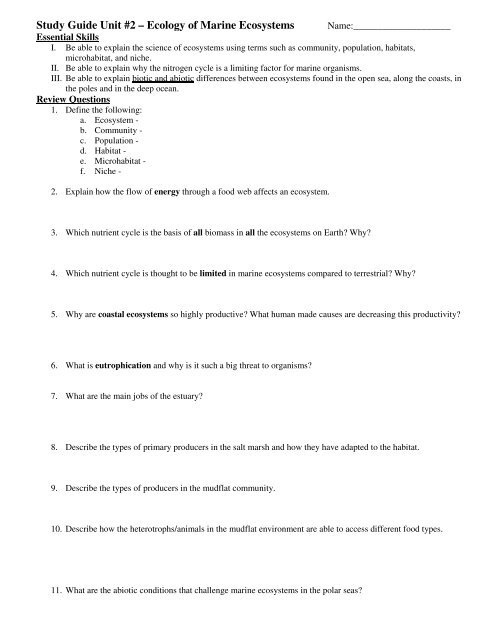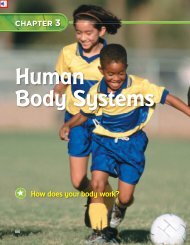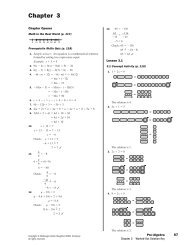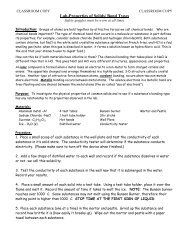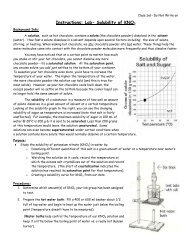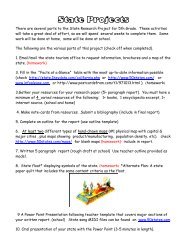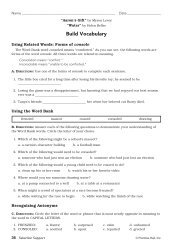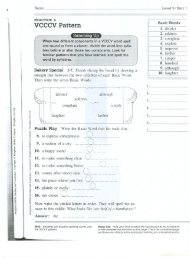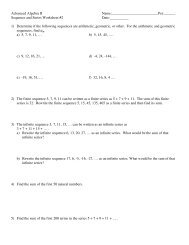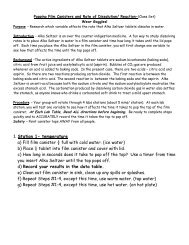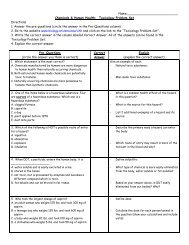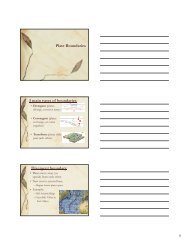Study Guide Unit #2 â Ecology of Marine Ecosystems
Study Guide Unit #2 â Ecology of Marine Ecosystems
Study Guide Unit #2 â Ecology of Marine Ecosystems
You also want an ePaper? Increase the reach of your titles
YUMPU automatically turns print PDFs into web optimized ePapers that Google loves.
<strong>Study</strong> <strong>Guide</strong> <strong>Unit</strong> <strong>#2</strong> – <strong>Ecology</strong> <strong>of</strong> <strong>Marine</strong> <strong>Ecosystems</strong><br />
Name:____________________<br />
Essential Skills<br />
I. Be able to explain the science <strong>of</strong> ecosystems using terms such as community, population, habitats,<br />
microhabitat, and niche.<br />
II. Be able to explain why the nitrogen cycle is a limiting factor for marine organisms.<br />
III. Be able to explain biotic and abiotic differences between ecosystems found in the open sea, along the coasts, in<br />
the poles and in the deep ocean.<br />
Review Questions<br />
1. Define the following:<br />
a. Ecosystem -<br />
b. Community -<br />
c. Population -<br />
d. Habitat -<br />
e. Microhabitat -<br />
f. Niche -<br />
2. Explain how the flow <strong>of</strong> energy through a food web affects an ecosystem.<br />
3. Which nutrient cycle is the basis <strong>of</strong> all biomass in all the ecosystems on Earth? Why?<br />
4. Which nutrient cycle is thought to be limited in marine ecosystems compared to terrestrial? Why?<br />
5. Why are coastal ecosystems so highly productive? What human made causes are decreasing this productivity?<br />
6. What is eutrophication and why is it such a big threat to organisms?<br />
7. What are the main jobs <strong>of</strong> the estuary?<br />
8. Describe the types <strong>of</strong> primary producers in the salt marsh and how they have adapted to the habitat.<br />
9. Describe the types <strong>of</strong> producers in the mudflat community.<br />
10. Describe how the heterotrophs/animals in the mudflat environment are able to access different food types.<br />
11. What are the abiotic conditions that challenge marine ecosystems in the polar seas?
12. Where are the most productive areas <strong>of</strong> the Arctic Ecosystem located? Why?<br />
13. Where are the most productive areas <strong>of</strong> the Antarctic Ecosystem located? Why?<br />
14. Explain how upwelling relates to the Antarctic seas being some <strong>of</strong> the most productive marine ecosystems.<br />
15. Where does most <strong>of</strong> the deep ocean get its nutrients from?<br />
16. What are the abiotic conditions that cause very, very little primary productivity in the deep ocean?<br />
17. Describe the stages <strong>of</strong> a whale fall.<br />
18. Describe how life exists around the hydrothermal vents. Be sure to include the producers and how they get<br />
their energy, the consumers, and how they get their energy.<br />
19. Describe organisms that make up the neuston, plankton (include the different types).<br />
20. Describe the small, medium and large organisms that make up the nekton in the open ocean ecosystem.<br />
21. What makes these nekton successful, and how do they defend themselves against potential predators?


